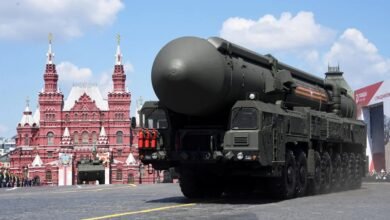
As the United States is currently undergoing the Presidential Election of 2024, the nation is poised for a significant transition in leadership. This article delves into the role of the President-elect, outlining their powers and responsibilities during this critical period.
Understanding the President-elect
The term President-elect refers to the individual who has been elected to the presidency but has not yet been inaugurated. This designation becomes official once the Electoral College votes are cast and certified, typically occurring in December following the election, with inauguration taking place on January 20 of the following year. The President-elect plays a pivotal role in shaping the incoming administration and preparing to govern effectively.
The Transition Period
The transition period is crucial for ensuring a smooth handover of power. According to recent legislation, specifically the Presidential Transition Improvement Act, this transition begins five days after Election Day and lasts for 77 days until inauguration. This law aims to facilitate an orderly transfer of power, even in cases where candidates do not concede immediately. The General Services Administration (GSA) plays a key role by providing necessary resources and support to both candidates during this time.
Powers and Responsibilities of the President-elect
The powers and responsibilities of a President-elect are extensive, encompassing various aspects of governance and administration preparation:
1. Preparation for Governance
The President-elect must assemble a transition team to strategize for their upcoming administration. This involves:
- Identifying Key Appointments: The President-elect needs to select individuals for critical positions within the cabinet and other federal agencies. These appointments require Senate confirmation, which necessitates careful vetting.
- Policy Development: Developing a comprehensive policy agenda is essential for outlining priorities once in office. This includes consulting with experts and stakeholders to formulate actionable plans.
2. National Security Briefings
Immediately following the election, the President-elect receives classified national security briefings. This access is vital for understanding current threats and preparing to address them from day one in office.
3. Communication with Congress
The President-elect must begin establishing relationships with congressional leaders to facilitate cooperation on legislative initiatives. This includes:
- Negotiating Legislation: Understanding ongoing legislative efforts and preparing to advocate for their proposed policies is crucial.
- Building Alliances: Forming alliances with key members of both parties can help ease the passage of important legislation once in office.
4. Public Engagement
Effective communication with the public is essential during this transition phase. The President-elect should:
- Outline Vision and Goals: Communicating their vision for the country helps set expectations and rally public support.
- Utilize Media Channels: Engaging with traditional media and social media platforms allows the President-elect to reach a wider audience, shaping public perception effectively.
5. Executive Powers
Once inaugurated, the President wields significant executive powers as outlined in Article II of the U.S. Constitution. Key responsibilities include:
- Executing Laws: The President must ensure that federal laws are faithfully executed through various executive agencies.
- Commander-in-Chief: They serve as commander-in-chief of the armed forces, directing military operations as necessary.
- Treaty Negotiation: The President has the authority to negotiate treaties with foreign nations, subject to Senate approval.
6. Judicial Appointments
The president-elect will also prepare to nominate judges for federal courts, including the Supreme Court, which has significantly influenced U.S. law and policy for generations.
7. Coordinating with Federal Agencies
The transition team must work closely with federal agencies to ensure continuity of government operations. Responsibilities include:
- Agency Review Teams: Deploying teams to assess agency operations, budgets, and personnel needs to facilitate a seamless transition.
- Collaboration with Outgoing Administration: Engaging with the outgoing administration to gather critical information about ongoing initiatives and procedures, which aids in knowledge transfer.
Conclusion
The role of a President-elect is multifaceted, involving extensive preparation for governance while navigating complex political landscapes. As they transition into office, effective communication, strategic planning, and collaboration with Congress are paramount for ensuring a successful start to their presidency. Understanding these dynamics highlights the importance of this transitional phase and underscores the responsibilities that lie ahead for America’s next leader. In summary, as we await the outcome of this election cycle, it is essential to recognize how crucial this period is for both the incoming administration and the nation as a whole.
For more Breaking news and updates, click here.
Connect with us on X/Twitter here.



